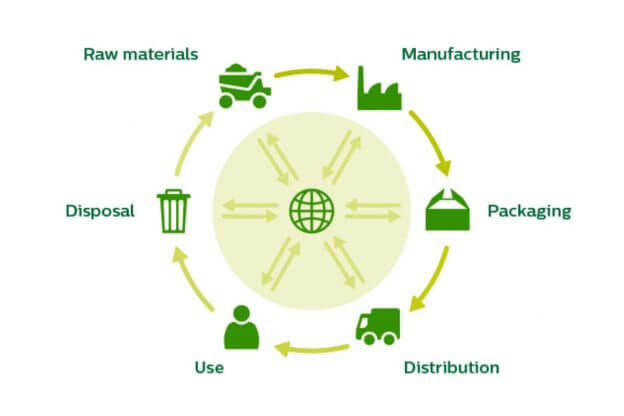Hey, it’s the Holy Month again! Muslims around the world would spend more time praying and preparing for iftar or suhoor meals. Do you choose to cook or buy your meal? Either way, make sure that you don’t toss away any edible food.
Ramadan is so much more than abstaining ourselves from eating, drinking, all forms of immoral behaviour, including impure or unkind thoughts. We should also use the momentum to control our other desires, abstaining from buying new and unnecessary materials; including food. Did you know that ironically, food waste during Ramadan increased around 20-30% in Muslim-majority countries?
The food waste not only came from edible meals, but also kitchen scraps. Since they’re cheap and come in bulk, we tend to waste a lot of vegetables and herbs in the kitchen. In fact, we could save so much money by regrowing our own veggies and there are lots to grow in our own backyard or apartment unit. We can trade the money used to buy veggies with our time and patience in waiting for our kitchen staples to be ready to harvest.
Regrowing vegetables from scrap
For us who live in apartment units or in a house without a yard, sometimes we could envy those who can cook from their own food supply. For that matter, we could utilize some space and our window sills for our very own mini garden. Here are some sensible, easy, and useful plants we can regrow with a minimum space.
Mustard greens, bok choy, lettuce
These greens must have left the bottom of the heart we don’t consume. Don’t rush to compost them, grow them instead. Place the base in a bowl of water and leave it where it can get adequate sunlight. Within three days you’ll have some leaves sprouting up. Transfer it to a pot of soil after a week.
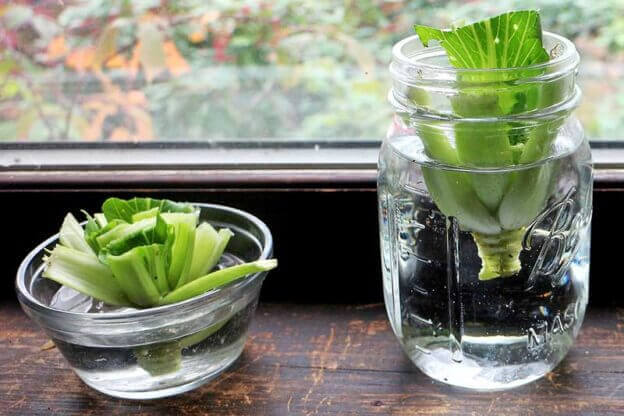
Lemongrass
To encourage your lemongrass stalks to grow new roots, place them bulb down in a jar with 2.5 cm of water in the bottom. Make sure you change the water out once every couple of days so they don’t get greasy. After two or three weeks, your lemongrass roots should be 2.5 to 5 cm long. Now you can transplant them to a pot of soil.
Green onions, onions, garlic and shallots
The onion genus is the easiest kitchen staple to regrow, since they’re low-maintenance. You can just bury the onion bulbs, and they will grow some sprouts within 4 days. Make sure they still have the eyes to grow roots. For green onions and leeks, they grow the same way as lemongrass stalk. Just take the leftover green onion roots, drop them in a glass with enough water to cover them, and move the onions around so the roots are pointing down. It’ll take less time to grow if the roots are still intact.
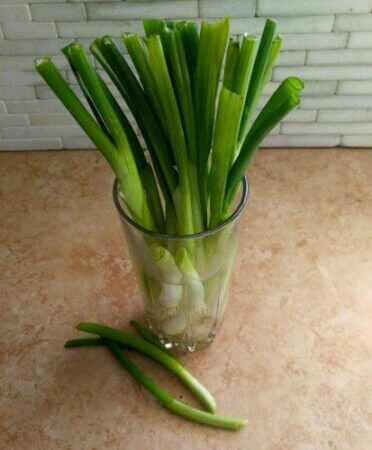
Rosemary, thyme, basil, and cilantro
These herb plants aren’t easy to find in Indonesian’s traditional market. We have to look for them in big supermarkets at the mall. Because of its limited availability in where we live, it’ll be really convenient to buy once and regrow the rest.

Make sure there’s about 2-3 inches of stem. Place the stems upright in a glass of water. When the new roots begin to sprout, transfer the herbs into a pot of soil.
Regrowing your fruits
We could regrow our fruits from the store-bought too! It’s time to gain more from your fruit’s seeds to regrow new plants.
Strawberries and tomatoes
Did you know that strawberries’ freckles are their seeds? Meanwhile, tomatoes’ seeds reside in its pulp, and it can have around 150-300 seeds in one fruit. To regrow the seeds, slice a bit of strawberries and tomatoes, and bury them in the soil. Make sure the soil is damp and keep it in a warm spot. In about 2 weeks, you’ll have brand new strawberry seedlings.
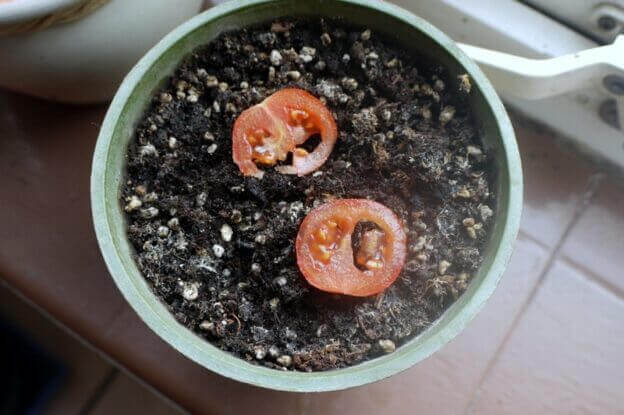
Avocado
Avocados need more of your time and patience, so if you’re still up for it, hear me out. Save an avocado pit (without cutting or breaking it) and wash off any residue. Let dry, then insert 3-4 toothpicks about halfway up the side of the pit. These toothpicks are for sustaining the pit from drowning in water.
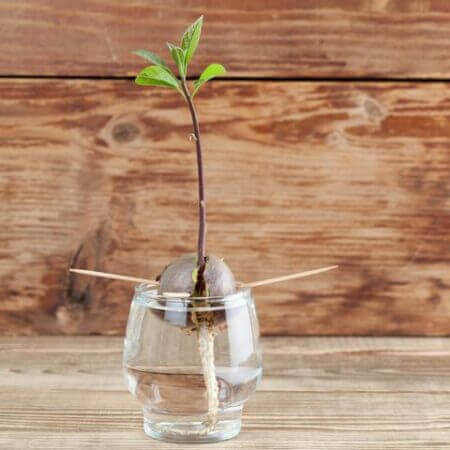
Suspend the pit broad end down in a drinking glass or jar. Fill the container with enough water to submerge the bottom third of the seed. Place the glass in a warm spot out of direct sunlight and change the water every 5 days. Roots and a sprout should appear in about 2-6 weeks. If not, start with another seed.
You can also add 1 tbsp of sugar in the water to add more nutrients to the seed. When the sprout gets about 15 cm tall, cut it back to about 7 cm to encourage more root growth. Once the stem grows out again, plant the pit in a pot filled with rich potting soil. Now it’s time to let your avocado tree grow, grow, grow!
Pineapple
Twist the crown to separate its fruit from the leaves. Peel off the bottom leaves to expose its stalk. Make sure there is no fruit flesh as that will rot the stalk. Turn it upside down, let it dry for a week.
After it dries, insert 4 toothpicks like how we did with avocado pits. Fill a designated container big enough for the pineapple to fit with water. Place the pineapple in the container. Make sure the water isn’t submerging any of the leaves. In 1-5 days, the pineapple stem should grow roots. Avoid extreme temperatures around the pineapple stalk, don’t let it too warm or too cold.
Replace the water every 5 days. You should also grow more patience with this one, as pineapple roots could take 4 weeks to grow before we can transfer them into a pot of soil. When the roots are strong and healthy, the leaves are green and thriving. That’s when you want to transfer them. Make sure the soil doesn’t cover green leaves. Bury the browning/dying leaves under the soil or remove them before planting.
Orange, apple, cherries, pear and kiwi
We could directly separate these fruits’ seeds from the flesh. Let it dry, and you can just bury it in the soil. To encourage its growth, we could set up a mini DIY greenhouse from plastic bottles like these.
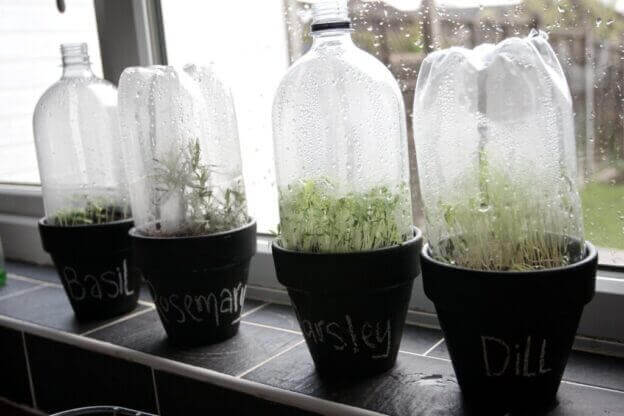
Not only avoiding food waste, but you’re also implementing sustainable consumption and production by having an endless supply of your own kitchen staples. Imagine how amazing that would be!



